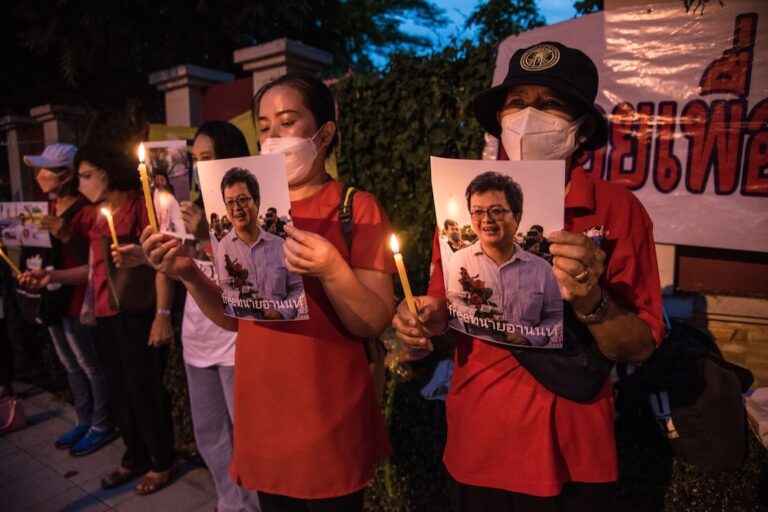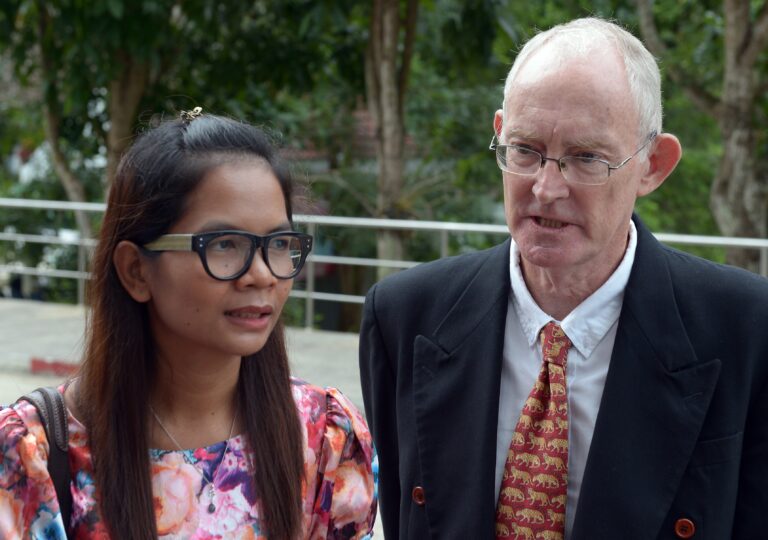(SEAPA/IFEX) – Thais will vote on a draft Constitution on 19 August 2007, in a crucial exercise the interim military government insists will put democracy back on track in the kingdom – but that critics say will have the opposite effect. Quite apart from the virtues and risks of its content, critics say the very […]
(SEAPA/IFEX) – Thais will vote on a draft Constitution on 19 August 2007, in a crucial exercise the interim military government insists will put democracy back on track in the kingdom – but that critics say will have the opposite effect.
Quite apart from the virtues and risks of its content, critics say the very process by which the Constitution was crafted and will be up for vote has been tainted and is undemocratic. The road to the referendum itself has itself been marked by controversy.
All state mechanisms have been deployed to encourage the 45 million eligible voters to endorse the draft Constitution completed on 7 July. The merits and perils of the draft charter have been discussed on televised debates and academic fora, but at the same time, the government in the past months had imposed limits and threatened sanctions against “organised campaigns” to reject the charter.
Throughout the campaign and “consultation process”, martial law had remained – and still is – in place in 35 out of 75 provinces, effectively limiting public campaigns against the proposed Constitution. A vocal anti-coup activist, webmaster Sombat Boonngarmanong, was briefly arrested on 6 July while giving a public speech in one of the affected provinces. Meanwhile, authorities in Bangkok recently forbade “Vote No” stickers from being displayed on taxis, citing obscure and rarely enforced rules against “advertisements” on taxis, and threatening operators with a fine of up to 1,000 baht (approx. US$30).
The draft Constitution was ostensibly adapted from Thailand’s 1997 “People’s Constitution”, which was scrapped by the coup leaders when they seized power from the democratically elected government of former Prime Minister Thaksin Shinawatra on 19 September 2006. But while experts from various fields had a hand in drafting it, the appointive nature of the charter writers, and the dubious alternatives to enacting it, had activists worried and skeptical from the start.
The draft charter has been met with protests by many sectors: anti-coup groups, supporters of Thaksin, pro-democracy groups, and even monks who had wanted a constitutional clause recognising Buddhism as the state religion. The one denominator common to all the charter’s critics is the assertion that the proposed new Constitution comes by way of “undemocratic means”. They also reject what has been characterised as a false (even non-existent) option offered by the referendum. Come voting day, Thais can either vote “yes” and accept the draft, or they can vote “no” – and allow the interim military rulers to impose any old charter of their choosing. Opponents of the draft charter have called the referendum a form of “blackmail”.
For all the questions about the process, however, the draft has also clearly divided the Thai public, between those who see it as a step toward normalising Thai politics and those who say that any compromise on democratic principles will inevitably give root to more undemocratic rule.
Even among media watchers in Thailand, there is disagreement over what the ultimate legacy of the charter will be. Some journalists note that the proposed Constitution promises more protection to media in terms of press rights and preventing politicians from owning media companies – a clear reaction to the excesses of the deposed Thaksin government.
A media rights watchdog, the Campaign for Popular Media Reform (CPMR), however, says the proposed Constitution falls short in pushing for media reform, and actually weakens certain mechanisms for ensuring more media independence. For instance, CPMR says, a proposed re-organisation of the National Broadcasting and Television Commission (NBT) and the National Telecommunications Commission (NTC) under one organisation “will lead to a monopolistic supervision of frequencies for national radio and television broadcasting and telecommunications”.


